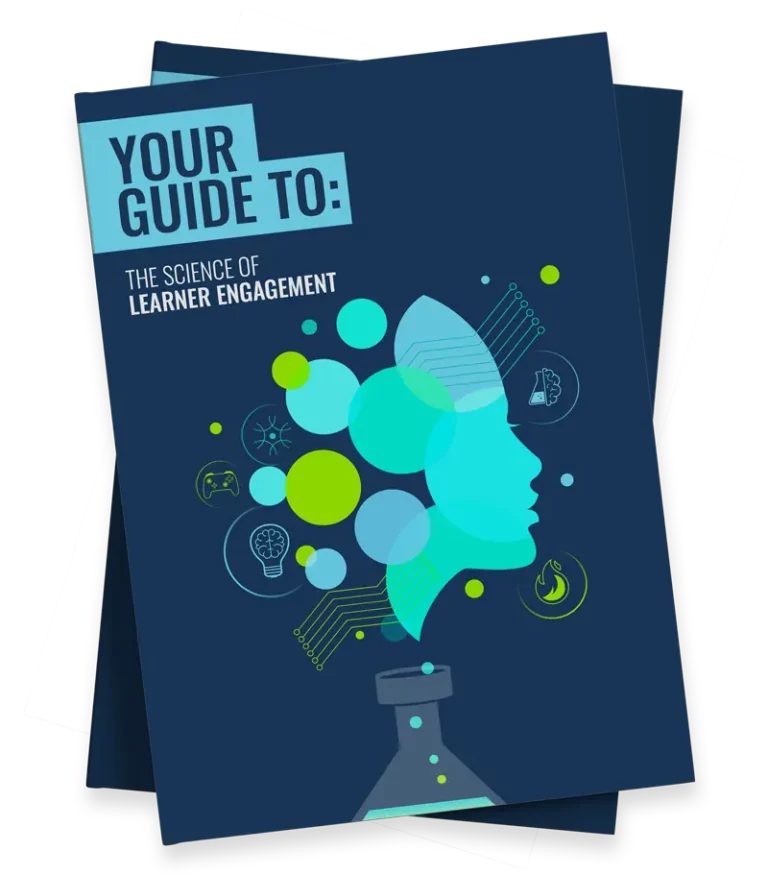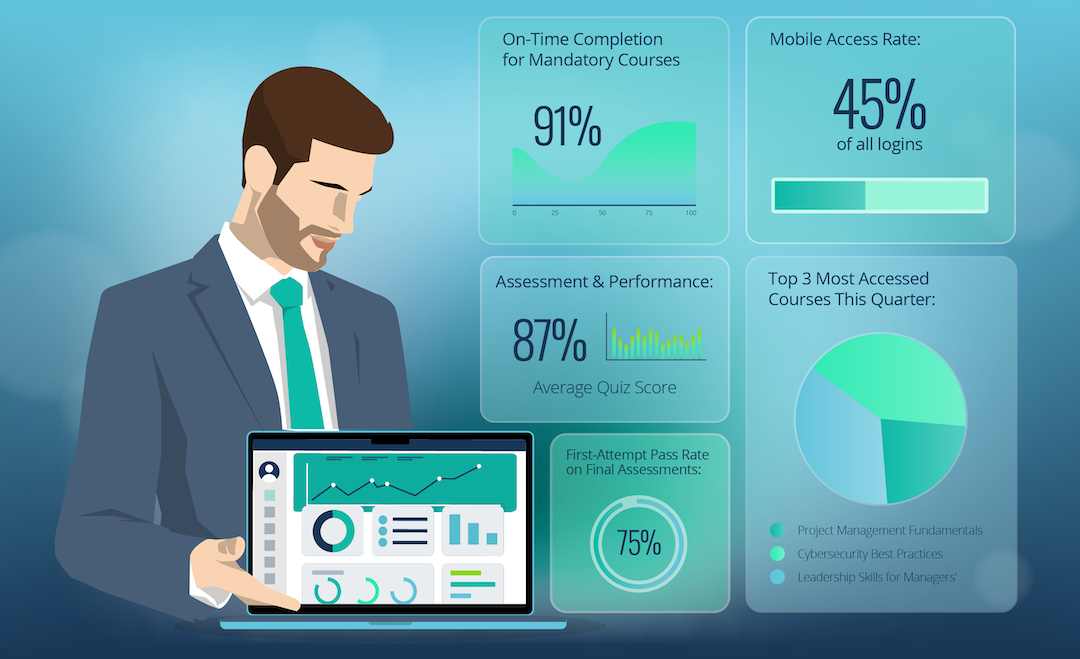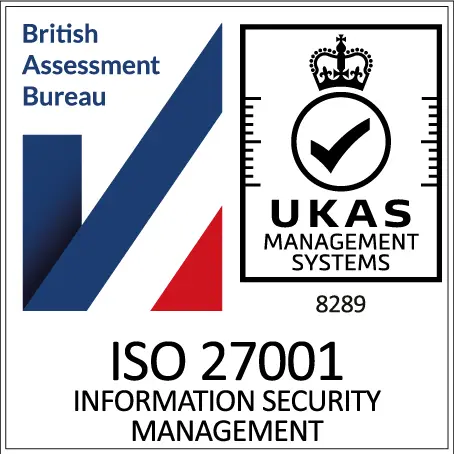
The gap between having a platform and having an effective one is the single biggest challenge in corporate learning today. The problem boils down to one thing: a fatal focus on implementation rather than engagement. This guide fixes that. Welcome to The Ultimate LMS Adoption Playbook.
You know the scene. The implementation team has signed off, the technical checks are complete, and your shiny new LMS is live. Unfortunately, even with all this planning, there’s still no guarantee that your learners will embrace your new platform.
In this guide, we’ll dismantle the myth that a technical rollout equals success and provide a human-centric blueprint to driving genuine learner engagement. Ready? Then it’s time to move from the drawing board to the playing field.
The Challenge
It’s fair to say that the learning management system (LMS) has become a foundational tool within most modern organisations. In fact, as many as 83% of companies now use one, establishing the platform as the engine room of any serious learning and development (L&D) strategy.
Unfortunately, that’s not the whole story. For many, their LMS journey is not one of seamless success, but a persistent source of frustration and inefficiency. This disconnect between the initial investment and long-term satisfaction is a real challenge. Just look at the data:
- 50% of L&D professionals don’t believe their learning systems are fit for purpose.
- 44% of organisations are actively unhappy with their LMS.
- Only 22.9% of survey respondents believe their LMS solves the right problems.
- And 1 in 4 organisations plan to change their LMS provider.
But here’s the rub: the failure is rarely due to the technology itself. Instead, it’s often the result of the strategy (or lack thereof) used for adopting it. All too often, organisations focus on the technical go-live date and neglect the human element: the need to market, communicate, and embed the platform into employees’ daily flow of work.
To avoid becoming another statistic, you need more than just software. You need a best-in-class adoption plan.
The Adoption Mindset
The critical, often-missed truth is this: successfully launching an LMS isn’t an IT project. It’s a change management initiative. After all, you’re not just deploying software, you’re asking people to change their daily habits. It’s the difference between:
- IT Mindset: “The system is live, so our work is done!”
- Adoption Mindset: “The launch went well, but now our real work begins!”
If you’re to succeed, you’ll need to pivot from being an implementer to being an evangelist, a marketer, and a community builder. Your employees are now your customers and your LMS is your product. It’s time to sell, sell, sell!
By embracing this adoption mindset, you stop fighting against human nature and start working with it. The following steps aren’t a technical checklist. They’re a blueprint for building real belief, fostering effortless engagement, and creating the learning culture of your dreams.
Let’s dive in.
The Ultimate LMS Adoption Guide
This 12-step LMS adoption guide walks you through every critical phase, from initial team assembly and content planning to post-launch community building. As a result, you’ll be ready to make a real, measurable impact against organisational performance.
1. Assemble Your Squad
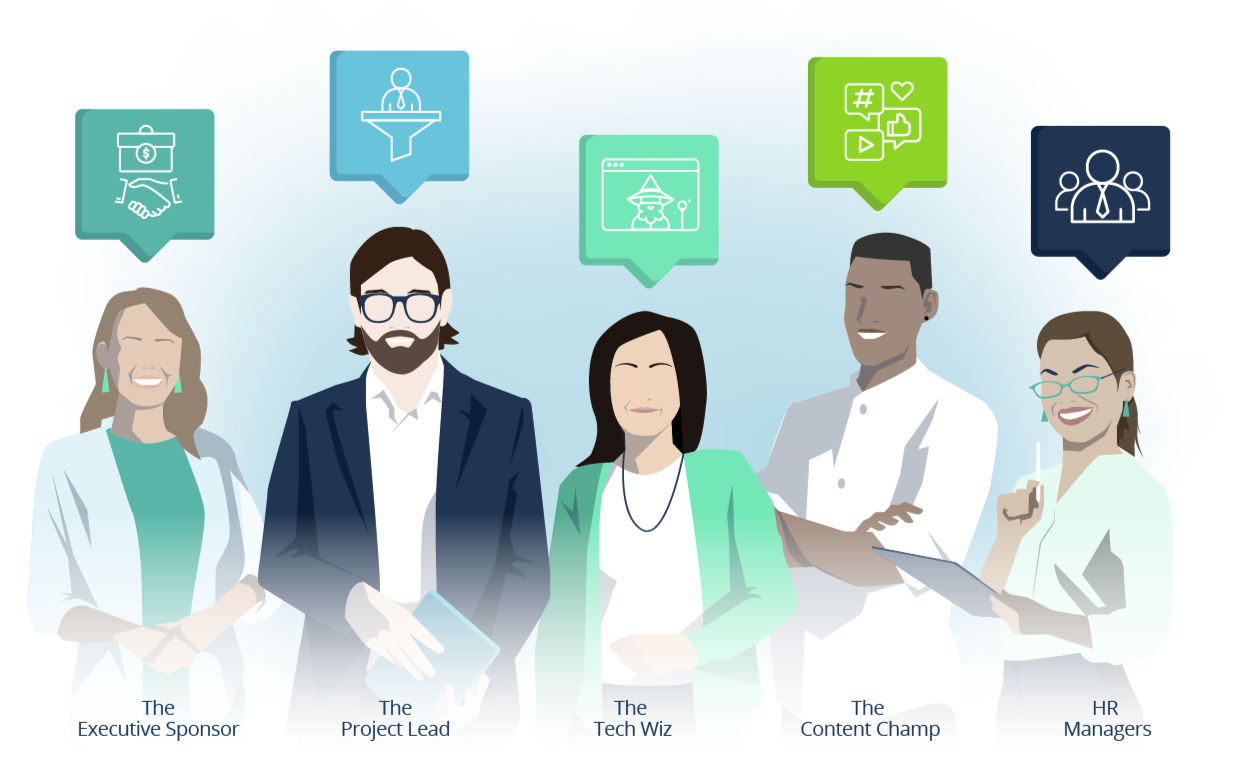
Your initial LMS implementation team had a clear mission: get the system live. Now it’s time to shift gears. Your new, permanent LMS team’s job is to get the system used. This isn’t just a maintenance crew. It should be cross-functional, highly motivated, and ready to build some serious buzz.
While there may be some natural crossover with your original project members, the focus and skillset here are entirely different. As such, here’s a breakdown of the roles we recommend for your new team:
- The L&D Lead: The project owner and content strategist. There’s a good chance you’ll play this role, so get ready to coordinate your squad and own the strategy.
- The Comms Partner: This person will help craft your messaging, design all your internal marketing campaigns, and manage all relevant communication channels.
- The Exec Sponsor: This is the voice from the top. Your business leaders should help to champion your new platform and communicate its strategic importance.
- The Business Partner: Include voices from HR and other departments to ensure your LMS becomes a natural, embedded part of the employee journey.
- The IT Specialist: Finally, you’ll need a technical anchor. This individual will handle integrations, data security, and any troubleshooting issues.
👨💻 Pro-Tip: In your first squad meeting, create a simple RACI chart (Responsible, Accountable, Consulted, Informed) to define ownership and formalise the success metrics that you’ll track.
2. Crack the ‘What’s In It For Me?’ Code
Your employees aren’t just busy, they’re time-starved. In fact, Josh Bersin estimates that the average employee has only 24 minutes a week to spare for formal learning. You’re now competing with every other priority on their calendar.
To cut through all the noise, you can’t just focus on technical features. You must immediately and clearly communicate your platform’s real value. In other words, you’ll need to shift your messaging from what the system does to what it delivers for each user.
To achieve this targeted approach, start by segmenting your audience and creating learner personas. Keep things simple at this stage and craft a value proposition for 3-5 of these fictional profiles. Here’s some examples to get you started:
- For the Go-Getter: ’Unlock the skills you need for your next promotion. Get certified in [in-demand skill] and take control of your career progression.’
- For the Busy Manager: ’Support your team efficiently. Assign targeted training to close skill gaps and track progress — all in one convenient place.’
- For the New Starter: ’Get up to speed and start contributing faster. This onboarding portal is your high-speed guide to understanding our company culture.’
- For the Overwhelmed Skeptic: ’Learn in the flow of work. Access rapidfire, 5-10 minute micro-courses to solve immediate problems and grow at pace.’
👥 Pro-Tip: Create a simple spreadsheet with columns for each persona, their most pressing pain point, and the LMS benefit that solves it. Then share this with your LMS squad and comms team.
3. The Perfect Launch

Launch day isn’t just a date on the calendar, it’s (arguably) the most critical moment in your LMS lifecycle. As such, it needs to feel like an unmissable event — one that captures everyone’s attention and makes logging in for the first time feel exciting and rewarding.
This is the moment your internal marketing campaign pays off and crucial initial user habits are formed. A strong launch will create momentum, while a weak one will result in apathy. Here are our key suggestions to ensure you get started on the right footing:
- Tease Your LMS: Develop a short, compelling teaser video and distribute it across your internal channels. The copy should promise value and create curiousity. For example, ‘Something big is coming to help you grow your career. Get ready on [Launch Date]!’
- CEO Support: Have a senior leader send a company-wide email introducing the LMS. They should position the platform not as a tool, but as a key part of the company’s investment in its people.
- Celebrate in Style: Mark the day with a live Q&A and demo session hosted by your launch squad. We recommend having branded merch at the ready (mugs, pens, notebooks, etc.) to help reward your early adopters.
Beyond this, remember that your learners’ first interaction with the platform is where adoption truly sinks or swims. For example, the first email from your LMS itself should not be a dry instruction manual. It should be a warm welcome with an irresistible call-to-action.
Whatever you do, don’t let your learners land on an empty dashboard and ask, ‘What now?’ Instead, hold their hand throughout their first interaction to ensure they find immediate value and direction.
📅 Pro-Tip: Rather than a single day, frame it as a ‘Launch Week’, with a clear first mission to be completed during that timeframe. This creates a collective, time-bound energy that will boost initial adoption.
4. Create a Content Hype Cycle
An empty LMS is a ghost town. And a learning platform with stagnant content is just as dead. To transform your system from a static repository into a dynamic destination, you’ll need a steady pulse of fresh, relevant content.
This doesn’t mean sporadic uploads. On the contrary, you’ll need to establish a reliable content drumbeat. This requires a long-term calendar that maps out regular content ‘drops’ to create consistent engagement and give your learners a compelling reason to keep coming back.
As ever, here are some tips to get you started:
- Plan in Themes: It’s often easiest to work in monthly or quarterly themes that align with company objectives. For instance, Q1 could focus on ‘Goal-Setting & Productivity’, with Q4 anchored around ‘Innovation & Future Trends’.
- Map the Mix: With your theme established, plan a diverse mix of content to cater to different preferences and needs. Where possible, focus on microlearning courses, videos, podcasts, or interactive experiences. Include at least one major release each quarter.
- Establish a Schedule: Finally, establish a clear, documented rollout timeline. This plan should include three crucial stages: aggressive promotion at launch, support during peak adoption periods, and teasing the next theme right before the current one wraps up.
✍️ Pro-Tip: Don’t try to build a year’s worth of content in one go. Instead, use ‘Sprints’ and work in a quarterly planning cycle. This will keep your content agile, relevant, and manageable.
5. Build Gamification Loops

We’re mad about gamification here at Growth Engineering. But we also know the truth: simply adding points and badges to a platform is like spraying confetti against a wall. While it might provide a fun initial spark, that engagement is sure to be fleeting.
True gamification isn’t just set dressing. It’s about designing human-centred loops that tap into intrinsic motivation and create a self-sustaining cycle of engagement. The goal is to make learning feel like less of a requirement and more like a reward in and of itself.
Modern learning platforms offer a toolkit of game mechanics, from experience points (XP) and badges to leaderboards and streaks. But don’t mistake tools for strategy. To achieve true success, you must implement them thoughtfully:
- Real Value: Keep things grounded. Badges should represent verifiable skills. Points should hold meaning. And your leaderboards should be linked to tangible, positive recognition from managers, not just digital bragging rights.
- Healthy Competition: While Leaderboards are effective, they can often demotivate the middle-of-the-pack. Counter this by implementing ‘Most Improved’ boards, or through introducing team-based challenges.
- Surprise & Delight: Remember that gamification should be fun! Keep your learners engaged with elements of surprise or variable rewards, such as a ‘hidden’ badge granted for completing a specific action.
🎮 Pro-Tip: Implement Knowledge Contests! These are excellent for boosting platform uptake and giving learners a chance to publicly display their subject matter mastery.
6. Spark a Learning Community
Your LMS should be the central hub of your organisation’s learning culture. Why? Because a staggering amount of learning happens socially — through conversation, shared experiences, and peer-to-peer support.
What’s more, a strong social learning approach will ensure your platform stays relevant and active, even when you aren’t releasing new formal courses. After all, it empowers your learners to learn from each other.
Ready to build a thriving social learning environment? Here are our suggestions:
- Focused Discussions: Establish a unique forum or ‘Club’ for every content theme (see step four). Prompt learners with relevant questions and provide incentives (like badges or points) to encourage activity.
- Social Polls: Use quick, informal polls to gauge opinions on a topic or spark debate after a module. Try presenting a relevant scenario and letting your audience vote on the best action or next step they’d take.
- User-Generated Content: Encourage your learners to share their own resources. This turns your top performers into teachers and ensures there’s always a constant stream of fresh content. Remember to vet any submissions to maintain quality control.
- Expert Access: Create a central space where employees can find subject matter experts, ask questions, and get immediate, targeted support. Ideally, valuable answers should be recorded and saved as Frequently Asked Questions (FAQs).
🤝 Pro-Tip: If your experts ever become overwhelmed, try designating ‘office hours’. This simple scheduling move protects their focus while creating scarcity and urgency for learners, which can actually increase engagement.
7. Make it Fun

Let’s be honest: the words ‘corporate training’ and ‘boundless joy’ are rarely used in the same sentence. But it doesn’t have to be this way. Injecting elements of playfulness isn’t just frivolous fun. It’s a strategic means to lowering learner resistance and creating positive emotional associations.
A vibrant learning culture requires more than the steady flow of training content. Here, we must look past the courses themselves and find the fun factor that drives continuous, voluntary engagement. To do this, here are our suggestions:
- Easter Eggs: Hide a funny video, a secret badge, or a piece of company trivia within a course or an area of the platform. The rumour of hidden treasures might just inspire further exploration.
- Treasure Hunts: Send learners on a guided tour of your platform with a treasure hunt. This can be a series of simple clues layered into your system and content. The first employees to solve the puzzle should win a unique prize.
- Slick Animations: Consider adding immediate, sensory feedback to celebrate progress. Integrate fun animations (like confetti or fireworks) or a satisfying ‘ding!’ sound effect when a special badge has been earned.
- Fun Themes: Build on your content calendar’s structure by sprinkling in fun, timely themes. Use these to guide your rewards and challenges, such as ‘Spooky Skills October’ or launching ‘The Learning Games’ to coincide with a major sporting event.
- Learning Games: Go beyond gamification by incorporating full-fledged learning games. These immersive experiences should not only deliver information and reinforce skills, but do so without sacrificing genuine entertainment and fun.
🎨 Pro-Tip: Remember there are a variety of customisation options available across your platform. This can be used to support your fun themes. For instance, during October, why not give your platform a Halloween makeover?
8. Enable Your Managers
You can have the most sophisticated LMS and the most engaging content, but if an employee’s direct manager is indifferent, adoption will stall. Managers are the multiplier force of your learning culture, as they hold their teams accountable for growth.
Your mission is to move them from being passive observers to active platform champions. This can be achieved by providing them with the right tools:
- Platform Knowledge: Managers must be able to lead by example. Offer them guidance and ensure they are experts in navigating the system and using its key features. This will help them to provide hands-on support to their teams.
- Clear Pathways: Pre-build and share short learning paths that managers can assign with one click. These pathways should tackle relevant team needs, such as ‘New Manager Onboarding’ or ‘Leading Hybrid Teams’.
- Reporting Dashboards: Give your managers a dedicated view of their team’s progress — not to micromanage, but to coach. They should be able to see who has completed mandatory training and who is lagging behind.
- Simple Prompts: Provide managers with short email templates or discussion prompts they can use during their one-on-ones. For example, ‘I saw you completed the ‘Delegation & Accountability’ course. What’s one thing you learned that you would like to implement this week?’
💼 Pro-Tip: One week before the company-wide launch, grant managers exclusive early access. Host a special webinar to show them their manager dashboard, walk through key learning pathways, and establish talking points for driving team engagement.
9. Activate Your Advocates
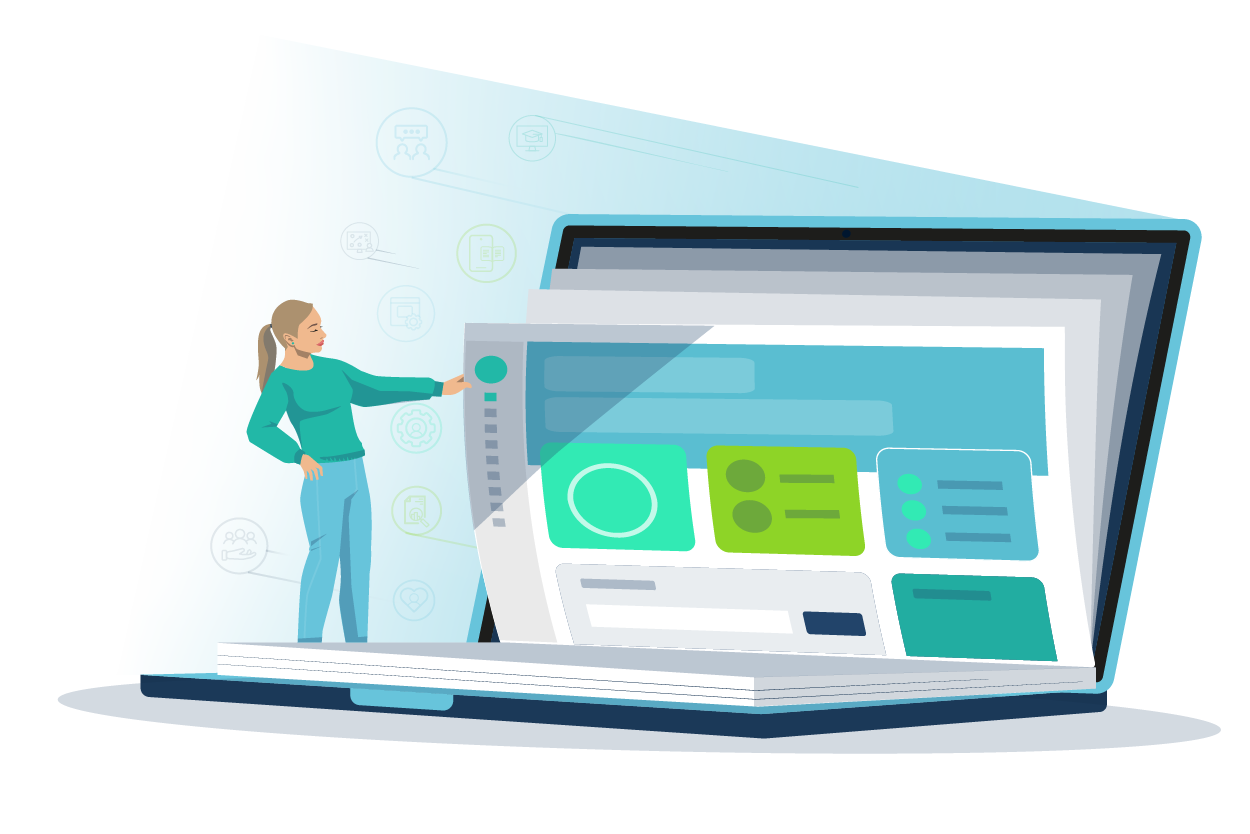
If you want your LMS to be a lasting success, you can’t afford to rely solely on your own team. You’ll also need to find organic advocates. These are the employees who naturally love to learn, share, and support others.
By tapping into this group, you add authentic, peer-to-peer credibility to your platform communications that no official email will ever be able to match.
Your goal should be to strategically identify, empower, and unleash this grassroots army to create a self-sustaining wave of enthusiasm. Keep a sharp eye out for early adopters and clear enthusiasts. Then use these strategies to activate your advocate network:
- Offer Clear Perks: Your advocates will be busy, so don’t just ask for help. Make sure it’s rewarding too. For instance, your official ‘LMS Champion’ programme could include access to exclusive features, digital badges, or branded swag.
- Highlight Their Voice: Ensure all advocates have access to a ready-made promotional toolkit. This should include social templates, platform graphics, and shareable resources. Your goal is to make promoting the platform as easy as possible.
- Create a Community: Establish a dedicated space (such as a discussion forum on your platform) for your advocates. This should be an environment for sharing tips, reporting common user issues, and highlighting useful feedback.
📣 Pro-Tip: Highlight your ‘Learner of the Month’ or your ‘LMS Champion’ in a regular newsletter or post. This provides massive recognition and helps to make advocacy aspirational.
10. Track What Matters
Your LMS’s reporting suite will offer a flood of data, but true success will always be measured by meaningful engagement and its impact on your business. At this stage, it’s time to shift away from ‘How many?’ to ‘How well?’ and ‘So what?’
With this in mind, here’s our guide to moving beyond top-level numbers and building a dashboard that tells a real story. Start by establishing the metrics that matter. For example:
| Weekly/Monthly Active Users | The true pulse of your platform’s health. Are your learners coming back? |
| Course Completion Rate | A direct measure of content effectiveness and user follow-through. |
| Time Per Session | Are learners deeply engaged or are they just clicking through? |
| Social Interactions | This includes comments, posts, likes, and shares. It measures community health. |
| Skill Proficiency Gains | Use pre- and post-course assessments to quantify knowledge retention. |
| Content Performance | Identify your ‘hit’ courses and underperformers to guide your content strategy. |
Next, you need to establish correlation data. Do employees who complete specific training (or interact regularly with your platform) show improved performance? For instance, does it result in higher sales, better customer satisfaction scores, fewer safety incidents, and so on?
Use this data to tell a powerful story of learning impact. Regularly report key successes to stakeholders to demonstrate the LMS’s value, secure ongoing buy-in, and build a business case for future budget and resources.
📊 Pro-Tip: While it’s tempting to focus solely on wins, never downplay actionable data that reveals friction. For example, if you see that social interactions have flatlined, highlight this immediately and create an action plan for intervention.
11. Listen, Adapt, and Iterate

A static platform is a dying platform. This is why it’s so important to maintain a continuous dialogue with your users. In fact, success requires a foundation of active listening, agile adaptation, and constant iteration.
An annual survey simply isn’t enough. Gathering the insights you need will require multiple, low-friction channels:
- Pulse Surveys: Embed a simple one-question poll after a course. For example, ‘How likely are you to apply what you’ve learned?’ or ‘Rate the relevance of this content (1-5)’.
- Feedback Forums: Create a dedicated ‘LMS Ideas’ board or discussion forum where users can submit and vote on feature requests and content suggestions. This will help you to identify the most in-demand improvements.
- Champion Insights: The advocates you established back at step nine are a priceless source of unfiltered feedback. Establish consistent and recurring focus group-style sessions with them to capture their insights.
Of course, collecting feedback is only half the battle. The true magic happens when you act on it and attempt to close the loop. This last part is the most often missed step. You need to broadcast any changes you’ve made. For example:
‘You spoke, we listened. Based on your feedback, we’ve made your ‘To-Do List’ easier to find on the learning dashboard. Happy learning!’
💬 Pro-Tip: Dedicate time each quarter to review a consolidated report of your key metrics (from step 10) and qualitative user feedback. This will grant you a holistic view of your platform’s evolution.
12. Sustain the Buzz
Time marches relentlessly on. Launch week energy will fade. Novelty will wear off. Unfortunately, this is often the moment where many LMS initiatives fail, settling into a state of passive existence. But it doesn’t have to be this way.
Your final and ongoing mission is to sustain the buzz, creating a rhythm of engagement that makes your LMS a permanent and vibrant fixture in your company’s culture. Remember, once you’re through the initial hype cycle, you’ll be in a marathon, not a sprint.
Many of the tips and suggestions listed above are designed to help you engineer long-term success. But don’t stop there. Here are some further strategies for long-term momentum:
- LMS Anniversaries: Mark your platform’s annual go-live date by celebrating your top learners and champions. Why not provide a breakdown of your most popular courses, top departments, total skills earned, and encourage your audience to go even further?
- Platform Events: Keep things fresh by hosting interactive events directly within your LMS. Think expert webinars, live Q&As with company leaders, or new certification programmes. These time-bound events create a sense of urgency and give your learners something to look forward to.
- New Feature Promo: Treat platform updates like product launches. When your LMS vendor adds a new feature (such as AI reporting or a knowledge assistant), don’t just release it silently. Ensure you explain how it supports your audience and makes their learning experience better.
- Team Challenges: Tap into your learners’ collaborative spirit by structuring platform activity into inter-departmental tournaments. For example, challenge two teams to see who can reach a pre-set experience point or course completion target the fastest.
🎊 Pro-Tip: Treat your LMS vendor as a strategic partner. After all, they have a unique, cross-industry view of what drives long-term engagement across their system. They’re not just there for technical support, but to help you maximise your platform’s value.
Final Words
Forget the myth of the ‘finished’ learning system rollout. As learning professionals, our job is never truly done. Meaningful LMS adoption requires a platform that evolves and adapts along with the needs of your organisation.
This means that the strategies listed in this article aren’t a checklist to be abandoned. They’re principles that must be upheld to foster a culture of continuous growth. And it’s through achieving this that you’ll unlock real learner potential.
So, it’s time to stop chasing logins and other vanity metrics. Instead, refocus your efforts on cultivating genuine curiousity. The journey to becoming a high-performing learning organisation starts here. Good luck!
Thanks for reading. If you’ve enjoyed this content, please connect with me here or find more articles here.
Ready to take the next step in your LMS adoption journey? Download our exclusive guide, The Science of Learner Engagement, today. Use its insights to supercharge motivation and boost business impact.

